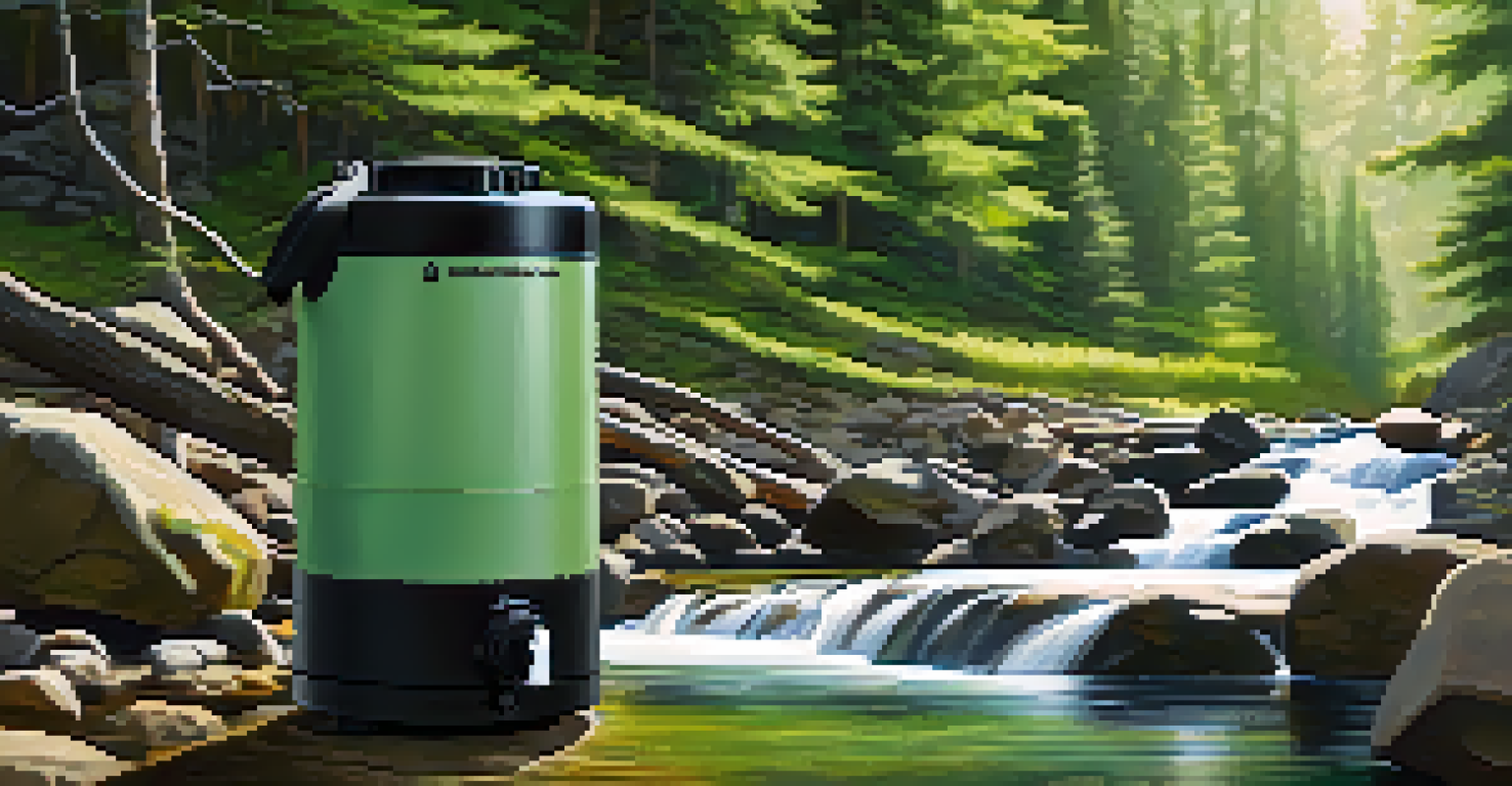Essential Gear for Traveling to Remote Areas Safely

Understanding the Importance of Preparation
Traveling to remote areas can be an exhilarating experience, but it requires careful preparation. When you venture into the wild, the unpredictability of nature can pose significant challenges. Having the right gear not only enhances your experience but also ensures your safety in unforeseen circumstances.
By failing to prepare, you are preparing to fail.
Imagine embarking on a hiking trip, only to realize you forgot your first aid kit or a reliable map. Such oversights can turn an adventure into a stressful situation. By planning ahead and equipping yourself with essential gear, you can focus on enjoying the beauty of your surroundings.
Preparation is more than just packing; it’s about understanding your destination and what you might encounter. Researching the terrain, weather conditions, and potential hazards will guide your gear choices and help you pack smarter.
Navigation Tools: Maps and GPS Devices
No one wants to get lost in the wilderness, which is why navigation tools are crucial. A reliable map and a GPS device can be your best friends when exploring uncharted territory. While technology has its perks, it’s wise to carry a physical map as a backup in case your device runs out of battery or loses signal.

Think of your GPS as a modern-day compass—great for pinpointing your location but not foolproof. In remote areas, terrain can interfere with satellite signals, so having a traditional map ensures you won’t lose your way. Plus, reading a map can enhance your awareness of the landscape around you.
Preparation is Key for Adventure
Thorough preparation, including researching your destination and packing essential gear, ensures a safe and enjoyable experience in remote areas.
Ultimately, combining both tools offers a safety net. Familiarize yourself with how to read maps and use a GPS before your trip, so you’re not scrambling to figure it out when you’re miles from civilization.
First Aid Kits: Your Lifesaver in Emergencies
Accidents can happen anywhere, especially in remote areas. A well-stocked first aid kit is an absolute necessity for any traveler. It should include items like band-aids, antiseptic wipes, gauze, and any personal medications you might need in case of an emergency.
Adventure may hurt you, but monotony will kill you.
Picture this: you’re hiking up a steep trail, and you trip, scraping your knee. If you have a first aid kit on hand, you can quickly address the injury and continue your adventure. Without it, even a minor scrape can lead to infection if left untreated.
Moreover, knowing how to use the items in your first aid kit is just as important as having them. Consider taking a basic first aid course before your trip, empowering you to handle minor injuries effectively and possibly saving someone’s life in a critical situation.
Appropriate Clothing: Dressing for the Conditions
The right clothing can make all the difference when traveling to remote areas. Layering is key; it allows you to adjust to changing temperatures easily. Think moisture-wicking base layers, insulating mid-layers, and waterproof outer layers to keep you dry and comfortable.
Imagine facing sudden rain in the middle of a hike, only to realize you’re drenched because you didn’t pack a waterproof jacket. Wearing the right gear not only protects you from the elements but also helps regulate your body temperature and prevents hypothermia or heat exhaustion.
Reliable Navigation Tools Needed
Using both maps and GPS devices together provides a safety net to avoid getting lost in uncharted territory.
Investing in quality outdoor clothing is worth it for your safety and comfort. Always check the weather forecast and tailor your outfit accordingly, ensuring you’re prepared for whatever nature throws your way.
Reliable Shelter: Tents and Sleeping Gear
When exploring remote areas, having reliable shelter is essential for a good night’s sleep. A high-quality tent protects you from the elements and critters while providing a comfortable space to rest. Look for tents that are lightweight, easy to set up, and durable enough to withstand wind and rain.
Imagine finding the perfect camping spot only to struggle with a flimsy tent that collapses at the first gust of wind. A sturdy shelter can make or break your outdoor experience, allowing you to relax and recharge for the adventures ahead.
Moreover, don’t forget about sleeping gear. Invest in a good sleeping bag rated for the temperatures you’ll encounter and a comfortable sleeping pad for insulation and cushioning. A good night’s sleep is crucial for maintaining energy levels on your journey.
Cooking Equipment: Eating Well in the Wild
Eating well while traveling in remote areas is not just a luxury; it’s a necessity for maintaining energy levels. Lightweight cooking equipment, such as compact stoves and mess kits, allows you to prepare meals easily. Consider bringing a portable stove, cooking utensils, and a durable cooler for perishable items.
Picture enjoying a warm meal under the stars after a long day of hiking. Cooking in the wild can be a rewarding experience, turning meal prep into a cherished part of your adventure. Plus, it gives you the chance to enjoy local produce if you're near a market.
Stay Hydrated with Filtration Gear
Carrying a portable water filtration system is essential for accessing safe drinking water during your adventures.
When planning your meals, aim for a balance of carbohydrates, proteins, and fats to keep your energy up. Pre-packaged meals can be convenient, but don’t hesitate to get creative with simple, nutritious ingredients that you can cook over a campfire.
Emergency Communication Devices: Staying Connected
In remote areas, cell phone reception may be spotty or nonexistent, making emergency communication devices vital. Satellite phones or personal locator beacons (PLBs) can help you stay in touch with the outside world, even when your phone can’t. These devices can send distress signals, potentially saving your life in emergencies.
Imagine being in a situation where you need help, but your phone is out of service. A PLB can alert rescuers to your location, giving you peace of mind as you navigate remote landscapes. It’s a small investment for a significant safety net.

Before your journey, familiarize yourself with how to use these devices. Ensure they are fully charged and pack extra batteries if needed. Being prepared can mean the difference between a minor inconvenience and a major crisis.
Water Filtration Systems: Staying Hydrated Safely
Staying hydrated is crucial when exploring remote areas, but finding clean water can be a challenge. A portable water filtration system or purification tablets can help ensure that the water you drink is safe. This gear is lightweight and easy to pack, making it a must-have for any adventure.
Consider this: you’ve hiked for hours and finally find a stream, but you’re unsure if the water is safe to drink. With a filtration system, you can filter out harmful bacteria and sediments, allowing you to hydrate without worry. It’s a simple solution that can keep you healthy on your journey.
Additionally, always carry extra water bottles or hydration packs to store clean water. Being proactive about your hydration needs will help you maintain your energy and focus on enjoying the beauty around you.